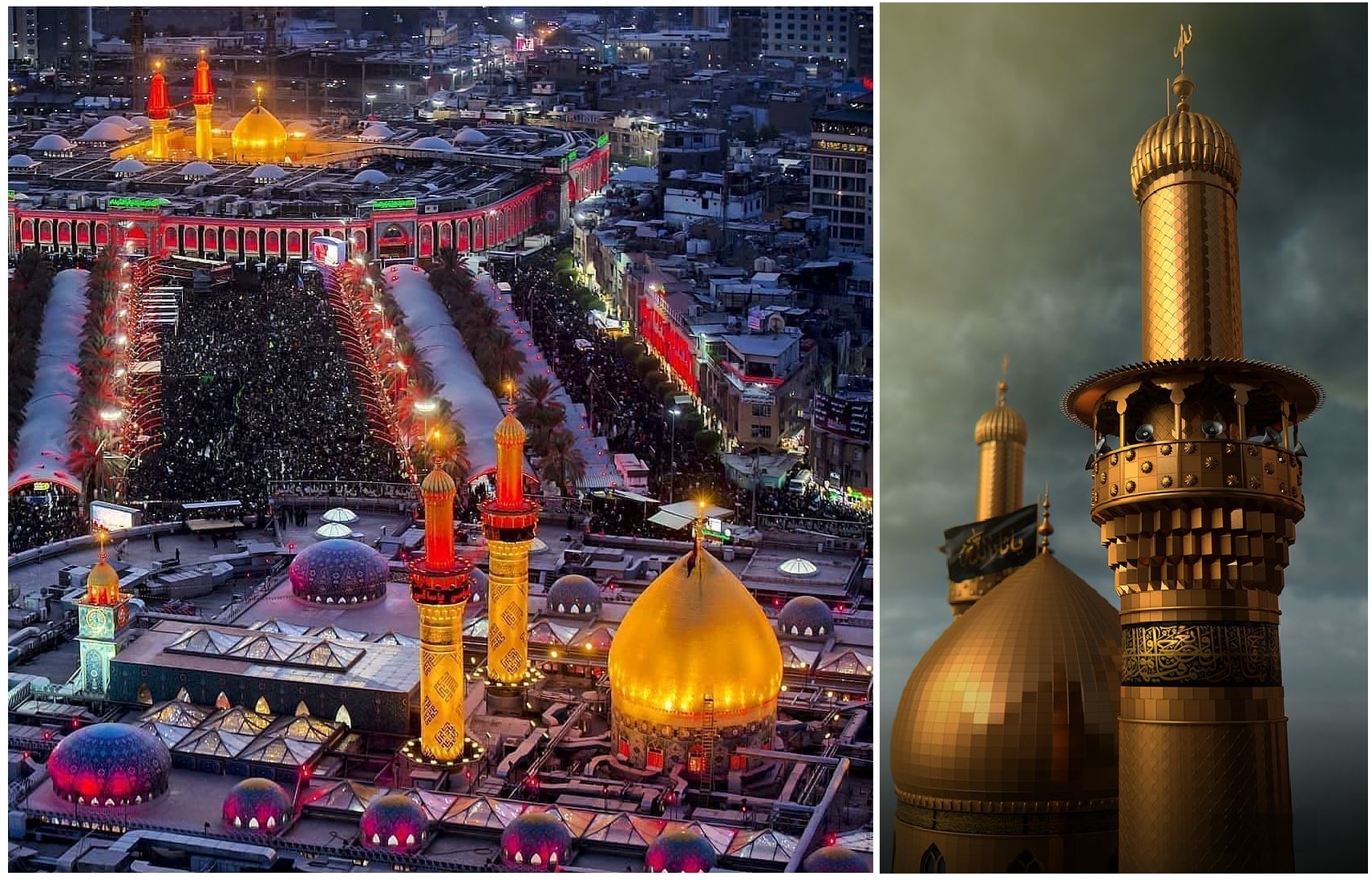The holy city of Karbala is well known for its religious buildings and cultural values. These buildings are characterised with the richness of Islamic features. Examples of which are: the two holy shrines of Imam Hussain and al-Abbas, smaller shrines, mosques, Hussainiyal, maqamal (sanctuaries) and religious schools which played important roles in the cultural and social life of the city.
The twin holy shrines of Imam Hussain (A. S.) and of his brother Al-Abbas (A. S.) are considered to be the most important buildings of Islamic architecture in this city where artistic skills are displayed with golden and silvery decorations, beautiful combinations of glazed ceramic decoration and pieces of small bright mirrror which decorate the interiors of both shrines adding to their splendour and beauty. The Muqarnasats were used as important architectural decoration especially inside the shrines and also at their entrances.
The holy shrines are distinguished by their main architectural features such as their, high walls and gates and the use of the most precious building materials such as marble, coloured stones and rare wood.
Another architectural feature which distinguishes the religious buildings and especially the holy shrines in Karbala is the use of local building materials such as the clay brick (ayur) and the colourful enamelled tiles (qashaifi) which Karbala is well known for as a leading producer and thus it is also known as Karbala Tiles.
These tiles are used in the decorating of the domes, minarets, walls, entrances and other locations. The use of qashani tiles in such buildings is only used as a building material for it is characterised with hardness and brilliance. Such natural properties cannot be found except in marble and coloured stone which are not naturally available in Karbala or other cities in Iraq.
The holy shrines of the city of Karbala and especially the two shrines of Imam Hussain (A. S.) and his brother al-Abbas (A. S.) are distinct for their prestige, splendor and significant domes and minarets. These minarets and domes are, gilded and covered with the beautiful qashani which is engraved with calligraphic writings of verses from the holy Quean.
This chapter will concentrate on the architecture of the holy shrines and other religious buildings. It is divided into the following parts:
- Imam Hussain Shrine.
- A]-Abbas Shrine.
- Smaller Shrines, Maqams (Sanctuaries) and al Mukhaiyam.
- Mosques
- Hussainiyat.
- Religious Schools.
Source:
- Holy Shrines of Karbala: By Raouf Mohamed Ali Al-Ansari
[P. 115-117].


